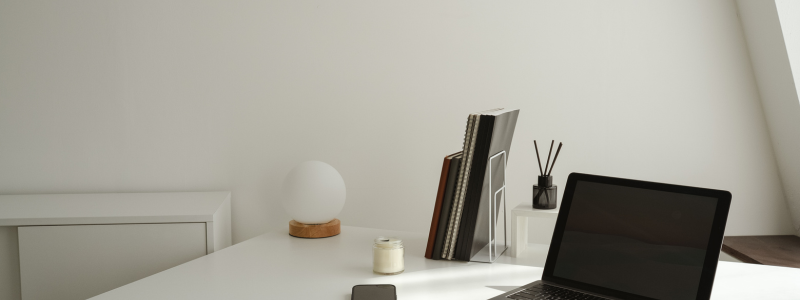
Head of Online Medical Content

Audiology Expert at Hearing Aid UK

How to Make Phone Calls With Your Hearing Aids
A brief guide
Overview | How phone calls work | Sound quality | Answering and managing calls | What about video calls? | Who benefits most? | Key takeaways | Conclusion
Latest Hearing Aid UK Update: 03/11/2025
Overview
For many people with hearing loss, phone calls have traditionally been one of the most frustrating aspects of daily communication.
Holding a phone against your ear whilst wearing a hearing aid often creates feedback whistling, and trying to hear through a tinny phone speaker whilst managing hearing aid settings can be genuinely exhausting.
Modern hearing aids have changed this entirely, and honestly, making phone calls through hearing aids is now easier and clearer than using a phone the traditional way.
In this article, we explore how making phone calls with hearing aids works and why this feature has transformed one of the most challenging aspects of hearing loss.
Whether you struggle with traditional phone use, need hands-free calling for work, or simply want clearer conversations with family and friends, understanding phone connectivity helps you get the most from modern hearing technology.
How phone calls work with hearing aids
Most current hearing aids connect directly to your smartphone using Bluetooth technology. When someone rings, the audio is streamed directly to both hearing aids rather than coming through the phone's speaker.
This means you hear the conversation in stereo, processed according to your specific hearing prescription, at a comfortable volume that's just right for you.
The clever bit is that you don't need to hold the phone to your ear at all - it can stay in your pocket, sit on the table, or remain wherever it happens to be.
The call comes directly to your ears whilst the phone's microphone picks up your voice, creating a genuinely hands-free experience.
Related reading: Bluetooth technology
Different methods for different hearing aids
The way your hearing aids handle phone calls depends on which model you have. Newer hearing aids with direct Bluetooth connectivity stream calls wirelessly without any additional equipment.
These work with both iPhone (using Made for iPhone protocol) and Android devices (using ASHA protocol).
Some older hearing aid models use telecoil technology, which picks up electromagnetic signals from compatible phones.
This works well but requires holding the phone near your hearing aid and positioning it correctly - a bit more fiddly than direct streaming, but still far better than trying to hear through hearing aids without any assistive technology.
Certain hearing aid brands require a small streaming device worn around your neck to facilitate phone connections, though this is becoming less common as direct connectivity becomes standard.
The sound quality difference
Here's what surprises most people: phone calls through hearing aids often sound clearer than regular phone calls. Because the audio is delivered directly to both ears and processed by your hearing aids, you're getting sound that's optimised for your hearing loss.
Background noise is managed by your hearing aid's processing, and the volume is always correct without constant adjustment.
Many people report that phone conversations become less tiring because they're not straining to hear or asking people to repeat themselves constantly.
The mental energy saved is considerable, particularly for people who need to make frequent calls for work or stay in touch with family.
Related reading: Hearing aids for background noise
Answering and managing calls
Most hearing aids let you answer calls with a simple tap on the hearing aid itself - usually a double-tap on either ear. Ending calls works the same way. Volume can typically be adjusted through buttons on the hearing aids or via a companion smartphone app.
Some premium models even offer additional features like automatic call answering, voice assistant integration, and the ability to switch between phone audio and hearing aid microphones depending on your environment.
Practical situations where this matters
The hands-free nature of phone calls through hearing aids is particularly valuable in certain situations.
Driving (using hands-free, of course), cooking, working on the computer, or simply wanting to take notes during a call all become far easier when you're not juggling a phone against your ear.
For people who work from home or attend frequent video calls, hearing aid connectivity makes online meetings considerably less exhausting. You hear colleagues clearly in both ears whilst your hands remain free for typing, note-taking, or whatever else you need to do.
What about video calls?
Video calls through platforms like Zoom, Teams, FaceTime, or WhatsApp work exactly the same way as regular phone calls. The audio streams directly to your hearing aids whilst your device's microphone picks up your voice.
This makes video conferencing far more accessible and less tiring than trying to hear through computer speakers or headphones worn over hearing aids.
Feedback and whistling concerns
One of the best aspects of streaming phone calls through hearing aids is the elimination of feedback whistling.
Because you're not holding anything against your hearing aids, there's nothing to create that annoying squeal that traditional phone use often causes. The audio path is entirely digital, so feedback simply isn't an issue.
Managing expectations around technology
Whilst phone connectivity in modern hearing aids is genuinely impressive, it's worth being realistic about a few things.
The connection uses battery power, so heavy phone use will reduce your hearing aid battery life somewhat - though most rechargeable models still provide all-day power even with moderate calling.
Occasionally, like any Bluetooth connection, there might be brief dropouts or connectivity hiccups, particularly in areas with significant wireless interference. These are rare with current technology, but worth being aware of.
Who benefits most?
Phone connectivity is particularly valuable for people who make frequent calls, work in jobs requiring phone communication, or find traditional phone use with hearing aids frustrating.
If you've been avoiding phone calls because they're difficult or exhausting, modern hearing aid connectivity could genuinely change your relationship with phone communication.
That said, if you rarely use your phone for calls and primarily rely on texting or face-to-face conversation, it's a convenience rather than a necessity.
Setting up phone connectivity
Connecting your hearing aids to your phone is typically straightforward - usually just a matter of pairing them through your phone's Bluetooth settings, similar to connecting wireless headphones.
Your hearing care professional will walk you through this during your fitting appointment, and most people find that it becomes second nature within a day or two.
Many hearing aid manufacturers provide companion apps that make managing phone calls even easier, offering quick access to volume controls, programme changes, and call management features.
The verdict on phone calls with hearing aids
Phone connectivity has transformed hearing aids from devices that made phone calls difficult into technology that makes calls clearer and easier than ever before.
The hands-free convenience, improved sound quality, and elimination of feedback whistling create a phone experience that's genuinely better than traditional methods.
If you've been struggling with phone calls or avoiding them altogether, modern hearing aid technology offers a practical solution that works reliably in real-world situations.
It's one of those features that demonstrates how far hearing aid technology has progressed - and why people who've experienced it often say they could never go back to their old hearing aids.
Key takeaways
✓ Modern hearing aids stream phone calls directly to both ears using Bluetooth, eliminating feedback whistling and delivering clearer sound than traditional phone use
✓ Calls are hands-free - your phone can stay in your pocket whilst you hear conversations in stereo, processed for your specific hearing loss
✓ The technology works with both regular phone calls and video calls on platforms like Zoom, Teams, and FaceTime
✓ Phone connectivity makes calls less exhausting and more accessible, particularly for people who've been avoiding phone conversations due to difficulty hearing
Conclusion
Phone connectivity in hearing aids has solved one of the most persistent frustrations people with hearing loss face.
The combination of hands-free convenience, excellent sound quality, and the elimination of feedback creates a phone experience that's not just acceptable but genuinely better than traditional methods.
If your hearing aids support phone connectivity and you haven't explored it yet, you're missing out on technology that could make daily communication considerably easier and far less exhausting.
Why Choose Us?
- FREE Hearing Tests
- Best Hearing Aids and Prices
- FREE Aftercare for Life
- FREE Home Visits
- 200+ Local Audiologists
- 60 Day Money Back Guarantee
Ready to experience clearer phone calls?
If you'd like to discover how phone connectivity could improve your communication, your audiologist would be happy to demonstrate the technology during a free home visit.
Your audiologists can show you exactly how it works with your devices and help you understand whether this feature would benefit your daily life.
If you're looking to change your hearing aid provider, call us to book a free hearing assessment with one of our audiologists.
Other hearing aid technology articles you might like...
 What hearing aid features do I actually need?
What hearing aid features do I actually need?  Speech Enhancement in Hearing Aids
Speech Enhancement in Hearing Aids  Spatial Awareness in Hearing Aids
Spatial Awareness in Hearing Aids Our specialist service includes:
Do not spend hundreds of pounds without getting a second opinion from us.
Please call us on 0800 567 7621
 Not only are the prices great, but the service is fantastic! Many thanks to your team.
Not only are the prices great, but the service is fantastic! Many thanks to your team.What's included in our hearing aid prices?
Other pages you might find useful
Ask the Experts
6 Morton Lane
Walkwood
Redditch
Worcestershire
B97 5QA
Latest Launch
When we refer to a product as 'Latest Launch', we mean it is the latest to be released on the market.
New
When we refer to a product as 'New', we mean that the product is the newest hearing aid model on the market.
When we refer to a product as 'Superseded', we mean that there is a newer range available which replaces and improves on this product.
Older Model
When we refer to a product as an 'Older Model', we mean that it is has been superseded by at least two more recent hearing aid ranges.
